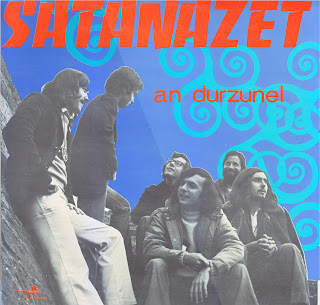''L'AFGHANISTAN"
MUSIQUE DE LA ZONE INTERDITE DU NOURISTAN
MUSIC FROM THE NURISTAN FORBIDDEN ZONE
Barclay, 1968, 920 086
Afghanistan as Nepal or India drew a multitude of travellers and adventurers in search of a powerful experience. This was possible in the sixties and seventies before the Russian invasion. And a number of them made recordings in the field throughout the country for Afghanistan was so rich in traditional and popular music that any kind of recordings could do for a good album. Yves Sommavilla was one of them and is presented as a ''keen traveller'' along with François Denis who spent time together in Afghanistan in 1968.
Now, what is really interesting in this album is the music and songs they managed to record in what is called now Nuristan formerly known as Kafiristan the land of the heathens in the north-east. This region was islamised at the end of the nineteenth century only by the emir Abdur Rahman Khan who conquered the area and changed its name. It was probably difficult to go there even in the sixties and this looks like a ''tour de force'' but they don't explain why Nuristan was forbidden. Although the inhabitants are officially Muslims they nevertheless (at that time anyway) managed to keep some of their ancient beliefs.
There are six tracks : three about Nuristan and three from different parts of the country (Kandahar, Kabul, Chaga-Saray). The most amazing tracks are instrumental music on the flute ''tula'' backed by framed drums. The tula player is excellent and the sound recording is good. Sommevilla says that they recorded this music at night at the Waigel pass (4800 m above sea level). It was then outside at night in a remote place but the festivities were stopped by the local imam. The Nuristani like the related Kalash had still the custom of singing songs to ancestors when one month after a death the body was replaced by a wooden effigy (track A3).
The others tracks are less exotic with surnay and dohol music, hashish-smoking house music with a singer, a harmonium, two tabla and dambura. The last track was recorded in a hotel in Kabul where ghijak and zerbaghali players performed for tourists.
Text in French.





































